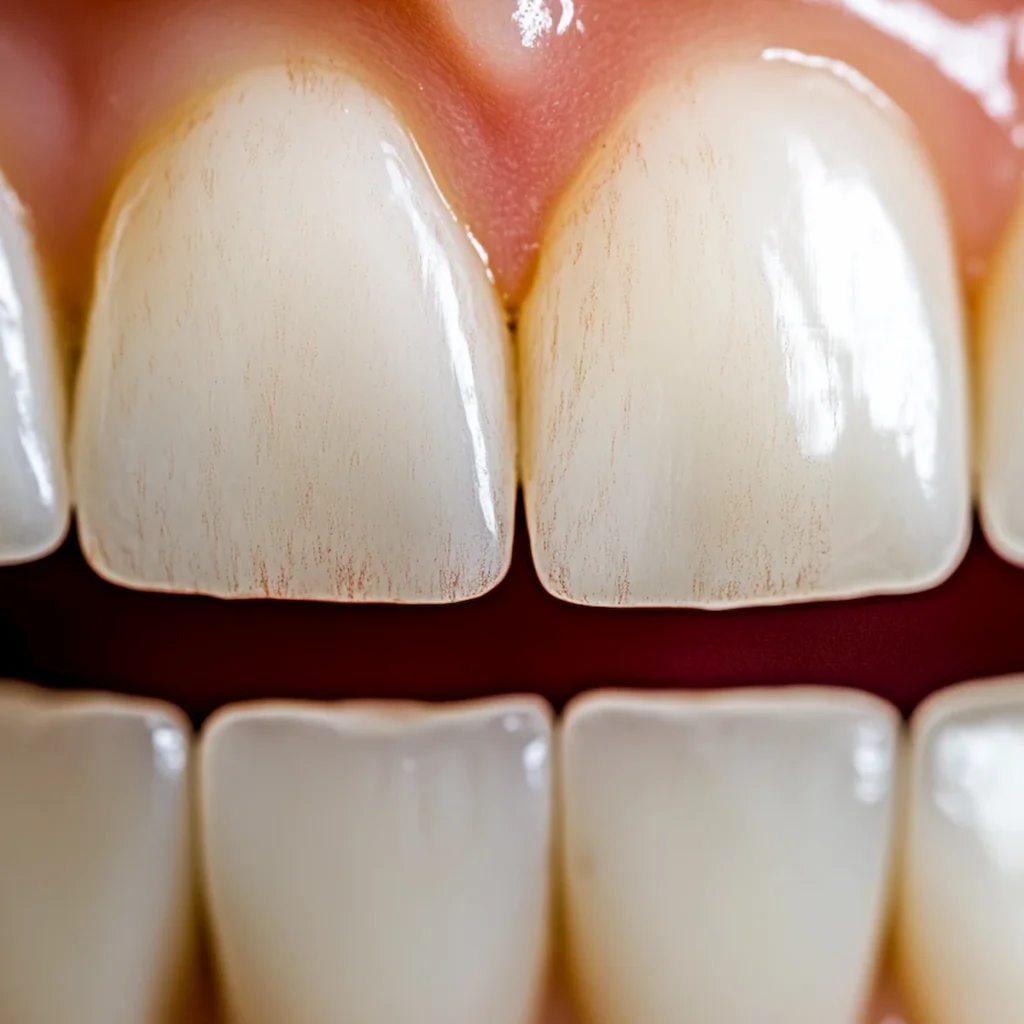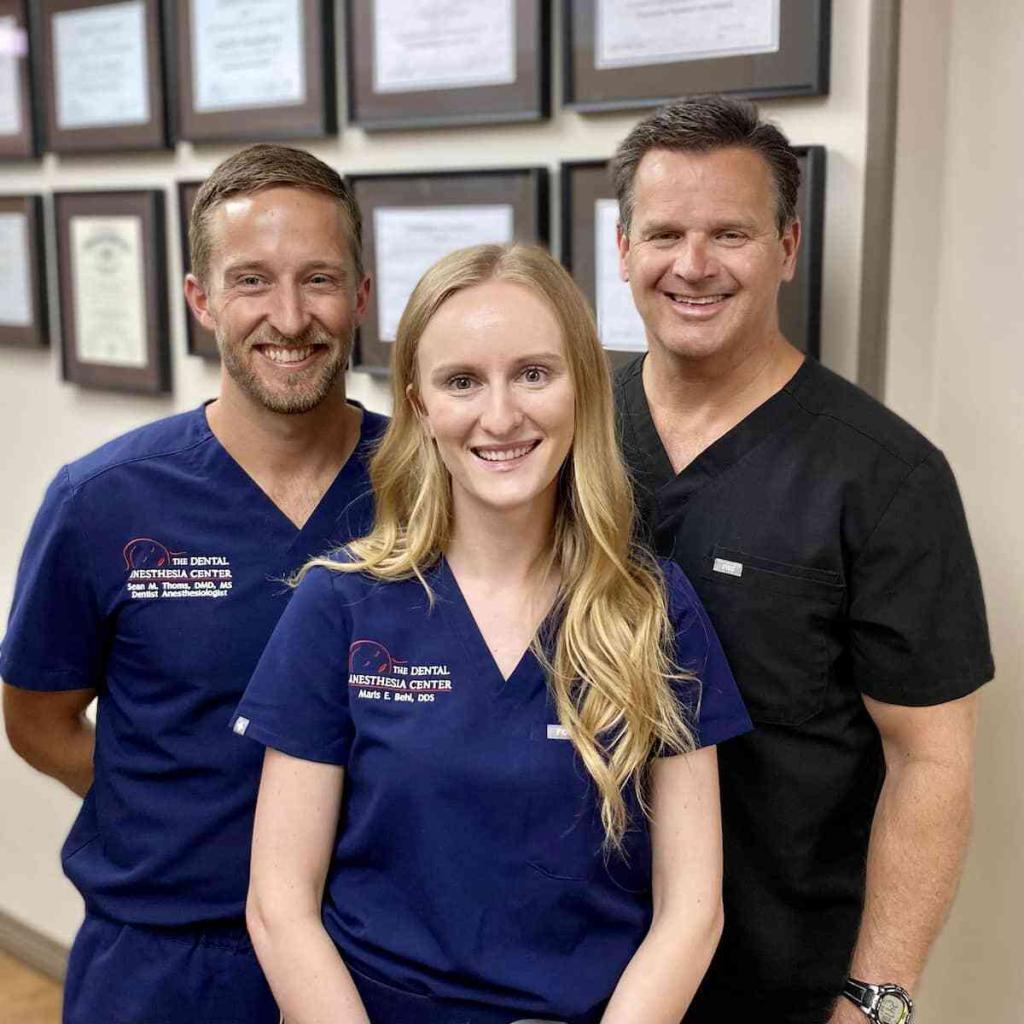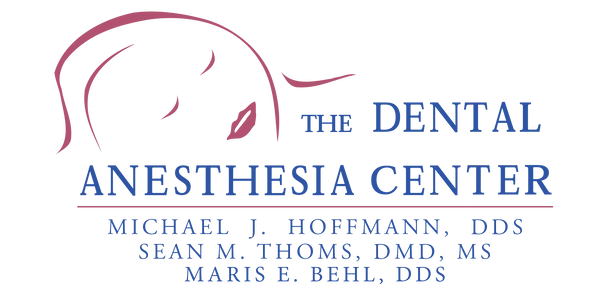At The Dental Anesthesia Center, we understand how these changes in your smile can affect your confidence and comfort.
Brown spots on teeth are more than a cosmetic concern—they can signal underlying dental issues or lifestyle habits that need attention. You’re not alone, whether you’ve noticed a subtle discoloration or more prominent staining. Many people, from children to older adults, experience brown spots on their enamel at some point.
If you’ve been hiding your smile or wondering what’s causing those brown patches, we’re here to help. Book a consultation today and let our team create a personalized plan to restore your confidence—gently, safely, and comfortably.

What Do Brown Spots on Teeth Look Like?
Brown spots range from light tan discolorations to dark, almost black patches. They may appear:
- On the surface of the tooth (extrinsic stains)
- Within the enamel (intrinsic discoloration)
- In the grooves or pits of molars
- Near the gumline or on the edges of crowns and fillings
Some spots are faint and scattered, while others may cluster or affect large areas. The key to understanding what they mean is identifying why they’re there.
Common Causes of Brown Spots on Teeth
1. Diet & Lifestyle Habits
Certain foods and drinks are notorious for staining teeth:
- Coffee and tea
- Red wine
- Soda and cola
- Dark berries
- Balsamic vinegar
The pigments in these items stick to enamel, especially when combined with poor brushing or dry mouth.
2. Poor Oral Hygiene
When plaque isn’t properly removed, it hardens into tartar, often brown or yellowish. This typically starts around the gumline and between teeth, where flossing is often skipped.
3. Smoking & Tobacco Use
Nicotine and tar from cigarettes or chewing tobacco are major culprits. They create deep, stubborn stains and damage gum health, leading to more visible discoloration and recession.
4. Tooth Decay
Brown spots may be an early sign of cavities forming in enamel. As decay progresses, the area darkens and may require a filling or crown.
5. Fluorosis
In children, excessive fluoride exposure while teeth are developing can lead to brown or white streaks, pits, or blotches in the enamel. This condition, called dental fluorosis, is usually cosmetic but permanent.
6. Enamel Hypoplasia
This is a developmental issue where the enamel is thinner or improperly formed. It can make teeth more prone to discoloration and decay, especially in young children or individuals with nutritional deficiencies or high fevers during tooth development.
7. Medications
Some antibiotics (like tetracycline) and mouthwashes containing chlorhexidine can stain teeth or increase your risk of brown discoloration.
How Dentists Treat Brown Spots on Teeth
Treatment depends on the cause and severity of the discoloration. Here’s how we typically address it:
- Professional Teeth Cleaning
- A thorough dental cleaning can significantly brighten your smile for surface-level stains from food, drinks, or smoking.
- Teeth Whitening
- Professional whitening can break down pigments embedded in enamel for stubborn stains. At The Dental Anesthesia Center, we offer options designed for sensitive teeth and anxious patients.
- Microabrasion
- This technique gently removes a thin layer of enamel to eliminate surface discoloration, especially effective for fluorosis or mild enamel stains.
- Dental Bonding or Veneers
- If the spot is deep or the enamel is compromised, cosmetic bonding or porcelain veneers can cover and restore the tooth’s appearance while strengthening it.
- Restorative Treatment
- The brown spot may need to be removed and filled when decay is involved. In more serious cases, a crown may be required.
How to Prevent Brown Spots on Teeth
Preventing brown spots is all about consistency and proactive care:
- Brush twice daily with fluoride toothpaste
- Floss daily to remove plaque between teeth
- Limit stain-heavy foods and rinse after consuming them
- Drink water regularly to support saliva production and cleanse the mouth
- Avoid smoking and tobacco
- Visit your dentist every 6 months for cleanings and exams
Parents should monitor children’s fluoride intake and use only a pea-sized amount of toothpaste. Talk to your pediatric dentist if you’re concerned about white or brown streaks on developing teeth.
When to See a Dentist
You should always consult a dentist if you notice:
- Brown spots that don’t brush away
- Rapid changes in tooth color or surface texture
- Sensitivity or pain associated with discoloration
- Spots on baby teeth or newly erupted permanent teeth in children
Early treatment can prevent small issues from becoming complex and costly.

You Deserve a Confident, Spot-Free Smile
Brown spots on teeth may be common, but they’re not something you have to live with. There are solutions, whether caused by coffee, cavities, or childhood conditions. At The Dental Anesthesia Center, we offer advanced sedation options for patients who feel anxious about dental visits, because getting a beautiful smile should never come with fear or discomfort.
If you’ve been hiding your smile or wondering what’s causing those brown patches, we’re here to help. Book a consultation today and let our team create a personalized plan to restore your confidence—gently, safely, and comfortably.

